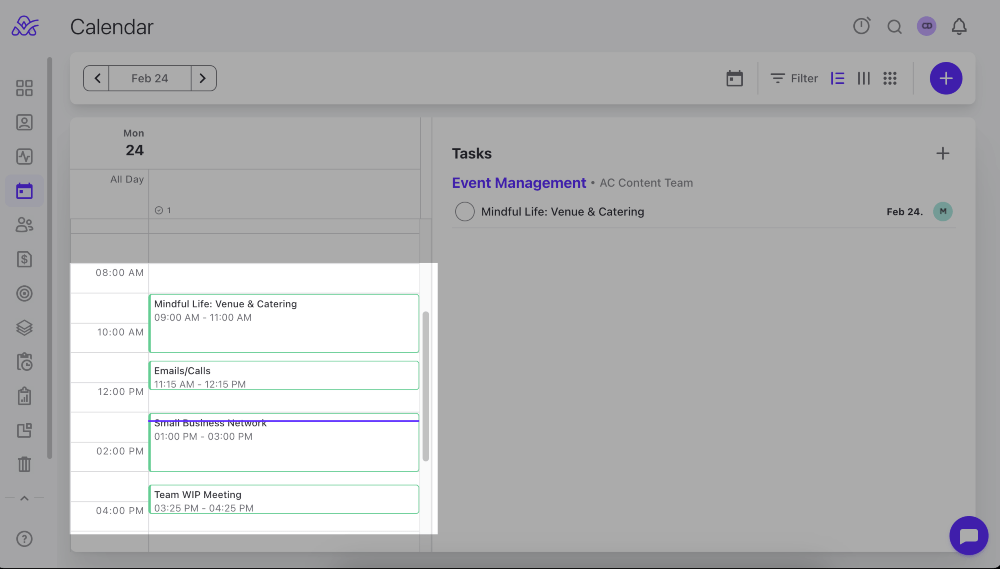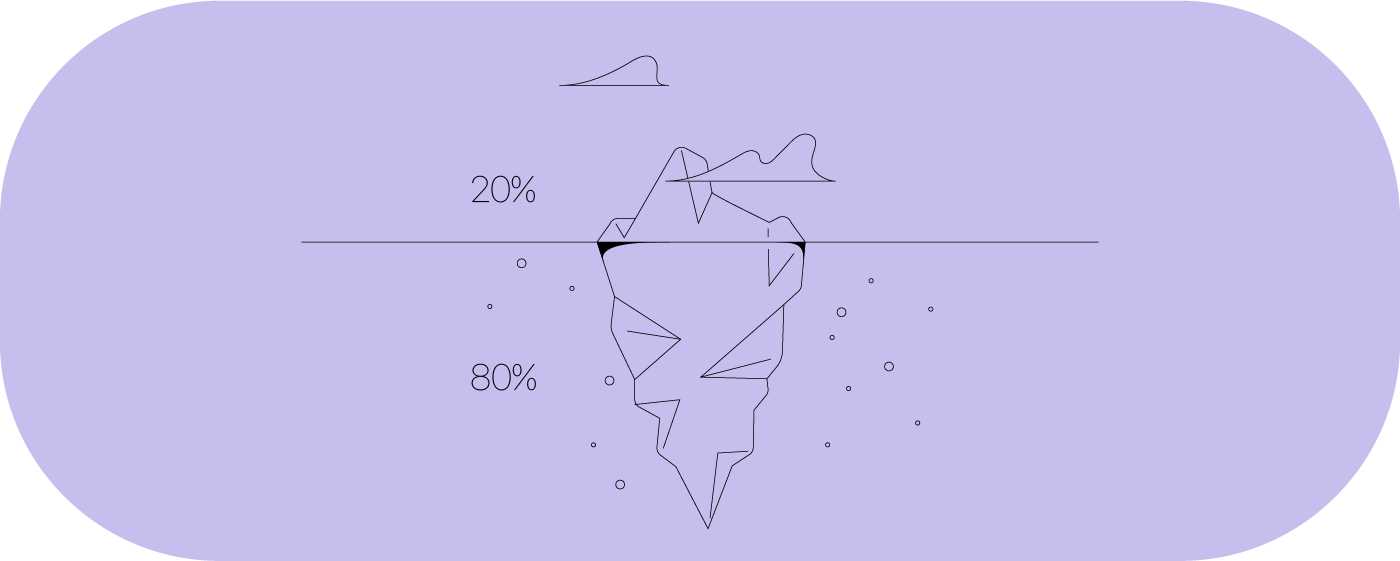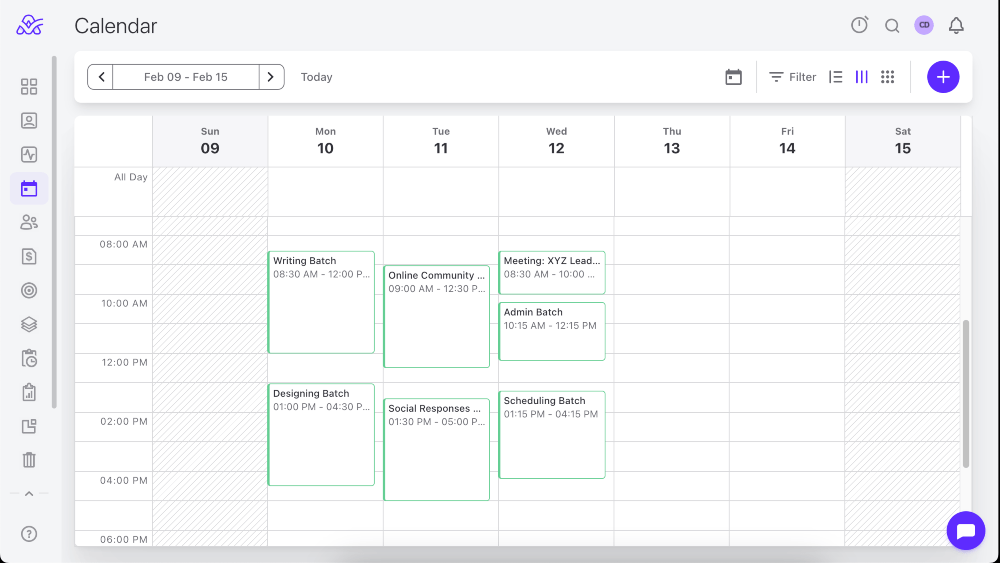On a scale of 1-10, how good are you at managing time? Are you a teeny tiny, chaotic 2, or are you a self-proclaimed efficiency buff, sitting on a throne way up in the proud 9’s?
Whether we realize it or not, most of us already use some type of time management system to structure our working day. Take your online calendar as an example. At some point, you would have used it to set tasks and schedule meetings. And while this is a form of time management, it’s not a hack.
Real-time management hacks, like the ones we share in this blog article, go beyond just scheduling. They drive productivity and efficiency, and they teach you to prioritize quality and impact, over quantity and effort. Sounds good doesn’t it? These hacks almost sound like time and energy savers. That’s because they are. Keep reading to find out how these methods can help you work smarter, instead of harder.
Pomodoro technique
The Pomodoro technique is a productivity hack that promotes 100% focus on a single task and minimizes burnout because you work on the task in short intervals. So you take the task, one pomodoro (Italian for tomato) at a time.
It involves:
- Choosing a single task to work on.
- Working on that task for exactly 25 minutes (using a timer).
- Taking a 5-minute break.
- Repeating the process until the task is completed (after 4 intervals, take a longer break of 15-30 minutes).

When to use the Pomodoro Technique
The Pomodoro technique is an ideal time management method for:
- Challenging tasks – These are tasks you keep avoiding, procrastinating on, and putting off because they feel overwhelming and you don’t know where or how to start.
- Distraction-free work – If you feel the main reason behind your lack of productivity is distractions, this technique can help you put a system in place that eliminates them. While your timer is counting down the 25 minutes, you stay in your work zone.
- Landing task time estimates – If you like to know where you spend your working hours, following the Pomodoro technique will let you identify the most accurate estimates of the amount of time a particular task takes. This can help you plan your weekly capacity and work schedule more accurately.
Insight: According to a study published in the journal Cognition, performance gradually decreases when people work on a task for 50 minutes straight.
We already provided much more details on how to implement pomodoro method in our detailed post, so make sure to check it out!
Timeboxing
Timeboxing is a simple technique where you set a fixed amount of time to complete a task and enter it in your calendar. The idea is to think of it as a meeting you must attend (a task you must do), and finish within that dedicated time slot.
It involves:
- Choosing a task.
- Identifying exactly what you want to accomplish within the timebox.
- Assigning a set time you think is appropriate for the task and entering it into your calendar.
- When the time comes, work on the chosen task for the entirety of the set timebox with no interruptions, with the aim to finish it in its entirety.

When to use Timeboxing
The timeboxing method is best for:
- Managing deadlines – Whether it’s a small or large task, the method helps you organize your calendar schedule into focused task timeboxes. When you arrange them in order of priority (deadlines) it increases your chance of delivering on time.
- Perfectionists – Probably one of the best methods for managing perfectionism because it takes your focus off constantly trying to achieve the unachievable quality, and instead keeps your mind on producing an output.
- Procrastinators – If there’s one thing procrastinators have in common, it’s their ability to get their act together when a deadline dawns upon them. Similar to perfectionists, the method helps them switch the brain into focus and action mode because they have a time limit.
Insight: According to a journal article in Psychological Bulletin, perfectionistic tendencies in young adults across the UK, US, and Canada have risen by 32% over the last 30 years.
We already covered all aspects of time boxing, so if you want to learn more, check out our detailed guide!
Eat the frog
Eat The Frog is a productivity and prioritization technique that aims to get the most difficult and important task out of your hair, first thing every morning. It’s all about taking advantage of the time of day when your mental capacity is at its peak and using it to accomplish hard tasks.
It involves:
- Identifying your frog (the most challenging, important task on your list).
- Scheduling your frog task in the first, morning time slot of your calendar.
- Completing your frog task at the beginning of your work day.

When to use Eat the Frog method
The Eat The Frog method is one of the best ways to:
- Prevent procrastination – When you take the tasks you tend to delay and prioritize them by turning them into frogs, you remove the possibility of procrastination rearing its ugly head into your day.
- Decrease stress – When you get into the habit of regularly actioning the tasks that weigh down on you like a tonne of bricks, over time you gradually decrease the level of stress and aversion towards them. You simply go into action mode immediately.
- Increase motivation – When you complete a difficult task first thing in the morning, your level of motivation and gratification will skyrocket. You basically get a high that can last for the rest of the day as you push through other tasks.
Insight: According to Forbes, in America, 20% of adults are chronic procrastinators, and 2 in 5 say they would procrastinate less if social media didn’t exist.
Want to know more about this method? Check out our Eat The Frog detailed how-to guide!
Pickle jar theory
The Pickle Jar Theory is a prioritization and time management method, which helps you categorize your tasks into buckets based on their value and importance to your business. It invites you to imagine your entire day as a pickle jar, which has a limited capacity (in terms of hours you have at your disposal).
It involves:
- Creating a list of your tasks.
- Dividing all the tasks into one of four categories:
- Rocks – Most important, high-value strategic tasks
- Pebbles – Relatively important or urgent tasks of medium priority
- Sand – Small tasks that aren’t too important but still bring benefits
- Water – Break and leisure time where you do things that are not work-related
- Block out time in your calendar for your rocks (the most important tasks).
- Schedule the pebbles in between your rock tasks.
- Insert a short time block for the sand tasks.
- Make sure you weave a break or two throughout the day and leave room for leisure time.
When to use Pickle Jar Theory
The Pickle Jar Theory is one of the best techniques to:
- Prevent burnout & multitasking – Because you block out time in your diary for each of the tasks, you stay focused on one thing at a time. This increases your dedication and focus and minimizes the stress associated with multitasking, which eventually leads to burnout.
- Visualize workload – When you visualize your day and all its tasks it helps you perceive time more accurately, but also manage your time more effectively because you won’t waste time randomly jumping straight into busy tasks.
- Structure your day – By giving your day the sequenced structure the Pickle Jar Theory creates, you get the benefits that come with having a routine, and more organized day.
Insight: According to the American Psychological Association, even brief mental blocks caused by switching between tasks can cost a person up to 40% of their productive time.
Does this technique sound like the solution to all your time and task management problems? Check out our Pickle Jar Theory how-to guide to learn more about how to apply the method.
Getting things done
Getting Things Done (GTD) is a productivity, task, and time management technique where you take the entire to-list hovering in your mind, and transfer it to an external source. The idea is to free up and declutter your brain, so you can apply all your cognitive capacity to actually getting tasks done.
It involves:
- Writing down all your tasks in a digital document or tool. This will be your inbox.
- Clarifying each item and identifying actionable, and non-actionable items.
- Organizing your inbox items into six categories:
- Calendar items – Meetings, appointments, and day-specific activities
- Projects – All tasks that are linked to various projects.
- Reference materials – All materials you find useful that don’t require action
- Next actions – All non-project tasks that can be actioned
- Waiting for lists – Delegated tasks and tasks you’re waiting on external input
- Someday/maybe items – Tasks you don’t have capacity for now, but might revisit in the future
- Review and reorder your tasks based on priority at the beginning or end of each day to decide which items you will action first.
- Engage in the tasks on your list based on the priority or context of each working day.

When to use the Getting Things Done method
GTD is a more complex time management method than some of the others we discuss in this blog. However, it can be one of the best techniques for:
- Decluttering the mind – Because you offload all your tasks and house them externally in a document or tool you can view, review, and track, you reduce cognitive load, reclaim your mind, and become more focused when you do take on tasks.
- Keeping on top of tasks – Once you create your GTD digital list or inbox, it will become your daily work guide, which you will review and edit as needed. So you’ll never lose track or forget to complete a task.
- Categorizing tasks – By grouping tasks into categories, you can base your task selection on the context of any given day. This is a unique benefit of the method, where you have the flexibility to choose action items based on your day’s capacity and energy levels.
Insight: Did you know, according to an article in the Journal of Experimental Psychology, people who use to-do lists and transfer all their tasks from their mind to a physical source, sleep better at night, feel less stressed, and are less likely to ruminate about unfinished business.
If you want to learn more about this method, check out our Getting Things Done explained and how-to guide!
Pareto Principle
The Pareto Principle (or the 80/20 Rule) is based on the idea that 80% of impact or results come from 20% of work tasks or effort. If we take this and apply it as a time management and prioritization technique, it means you should be focusing on a small list of tasks, which promise to deliver the greatest output.
It involves:
- Creating a list of all your tasks.
- Finding the 20% of tasks in your list that will deliver the greatest impact.
- Scheduling your priority impact tasks (the 20% you identified in the previous step).
- Addressing the remaining 80% of tasks by splitting them into three categories:
- Schedule as secondary priority tasks you will action
- Delegate to someone within the team so they move off your task list
- Bin tasks which are the ones that add no, or little value to the business

When to use the Pareto Principle technique
The Pareto Principle is one of the best methods for:
- Reducing your to-do list – Most time management techniques help you organize and prioritize the items on your to-do list. This one is one of the few that encourages you to eliminate items, cutting down your list from the get-go.
- Establishing & actioning priorities – Instead of working harder, the method helps you work smarter, because you focus your attention and energy on high-return activities.
Insight: According to an HBR article, when people fail, it’s not because of a lack of effort, but because their effort was misdirected or misaligned.
To find out more about this method and learn how to apply it, see our Pareto Principle guide to time management.
1-3-5 Rule
The 1-3-5 (or 1-3-9) Rule is a simple time management hack that helps you put a cap on the number of tasks you take on in a day. It invites you to complete a set number of tasks, where you prioritize core, high-importance tasks over random admin tasks.
It involves:
- Listing all your tasks.
- Grouping your tasks into three categories:
- Large core tasks
- Medium importance tasks
- Small admin tasks
- Selecting the tasks you will allocate for the day based on priority: 1 core task, 3 medium tasks, and 5 or 9 small admin tasks.
- Scheduling time in your calendar to complete tasks.
- Start your working day with one core task, and then move on to the medium and small tasks in order.
When to use the 1-3-5 Rule
Because of its simplicity, the 1-3-5 Rule is one of the best time management and prioritization hacks for:
- Daily accomplishments – If you like ticking off tasks, especially the big ones, you’ll love this method because it lets you feel like a winner every day when you’ve actioned all nine items in your 1-3-5 list.
- Balancing hard & easy tasks – Because you only have one large, difficult task, and then a mix of medium and small tasks, your brain doesn’t feel too overwhelmed. This also lets you take advantage of high and low energy levels throughout the day and match those levels to the amount of energy the type of task requires.
Insight: According to a Forbes article, Oliver Burkeman, author of Four Thousand Weeks: Time Management for Mortals, says the average person has 4000 weeks of life. And if we want to live well, we need to accept that mastery over time is an illusion. What we should be focusing on instead, is embracing the finitude of time, and making the hard decisions of what we choose to do with that time, and what we must forgo.
We already covered everything you need to know about 1-3-5 rule in dedicated guide, so make sure to check it out!
Task Batching
Task batching is a time management approach where you group similar action items into bundles that you complete one at a time. The idea is to limit context switching, which can minimize productivity and result in a lower quality of work output.
It involves:
- Listing all your tasks.
- Grouping tasks according to work type, project or effort.
- Blocking out time in your calendar for each group of tasks based on the time you have available in your diary.

When to use the Task Batching method
As one of several time-blocking methods, task batching is one of the best techniques to:
- Combine and conquer tasks – For those of you who have long to-do lists of all sorts of large (and particularly) small tasks, the method, with its batches of tasks, can help create a system of order.
- Promote deep work – If you’re struggling to stay focused on the task at hand, this method can help get you in the habit of doing one type of task at a time, for a longer period of time.
- Save time & cognitive energy – Because you limit the number of times you switch between different types of tasks, you save on the time it would normally take to get in the zone of each task. It also saves the cognitive energy that is lost in frequent task switching.
Insight: Cal Newport, author of Deep Work, believes to create an environment where true deep work can take place, you should not only block out chunks of time in your diary but also protect yourself from internal and external distractions. This means muting phones, emails, and instant messaging, but also closing doors and isolating yourself from external noises.
How ActiveCollab Helps You Manage Time & Boosts Productivity
Time management techniques come in different forms. While all promise to make you more productive, some also help eliminate specific pain points for individuals, like procrastination and perfectionism.
As a work management tool, ActiveCollab is the perfect platform for any professional wanting to make the best use of their time, through the application of one of the many time management methods.
With project and task management you can organize your to-do lists and customize or categorize tasks with labels for priority and work type. Then use the calendar to schedule your tasks for actioning. When the time comes, use the time tracker to record how long each task takes, so you can make more accurate work planning schedules in the future.
Whether you’re a professional services agency running a dozen campaigns, a consultancy managing several dozen clients, or a software startup, you’ll know how important it is to have a reliable, simple, and powerful work management system in place. Are you in dire need of a platform where your team can organize and centralize all their workflows, so everyone can manage their time better?
It might be time to give ActiveCollab a shot! Sign up for our 14-day free trial or book a demo with one of our people, and start working more efficiently!


